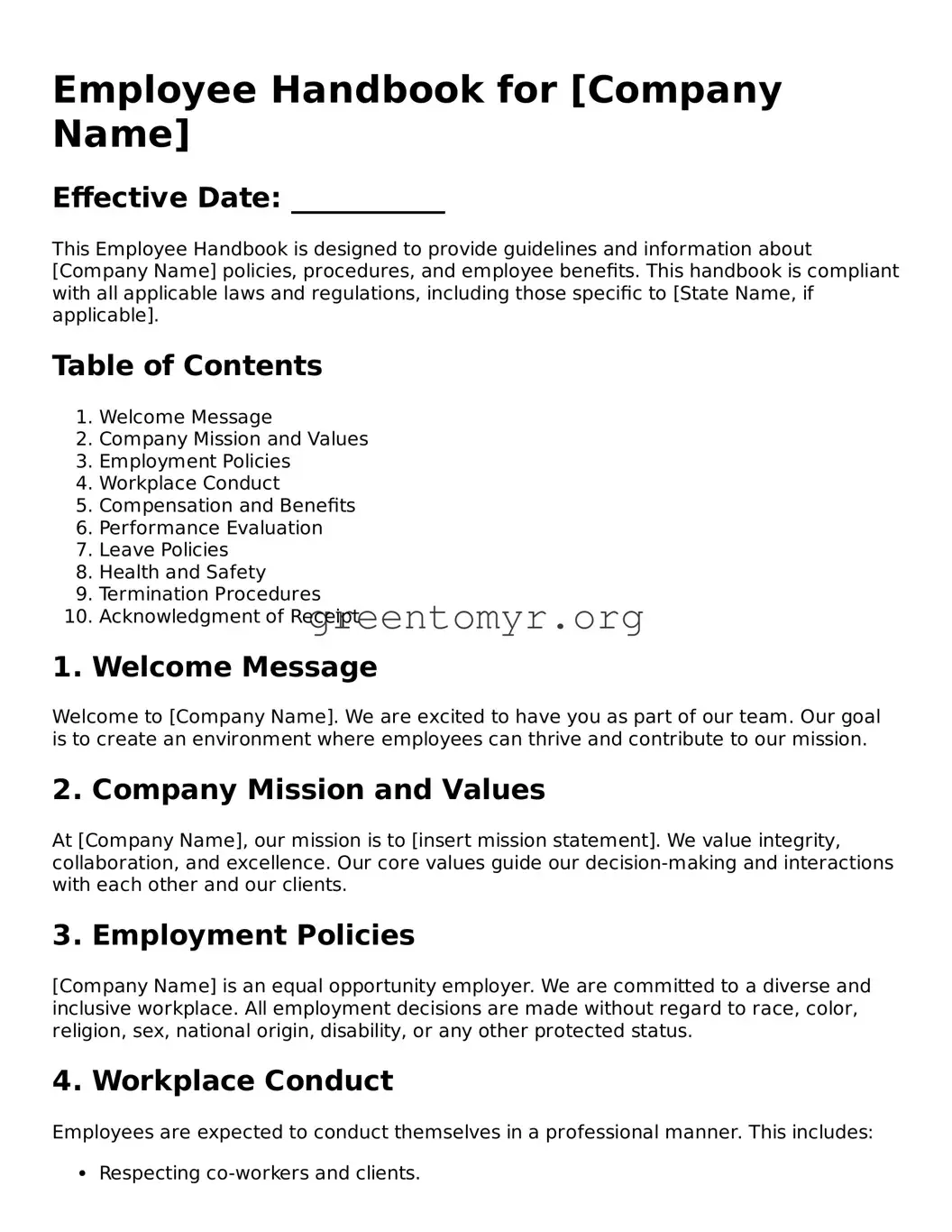Employee Handbook for [Company Name]
Effective Date: ___________
This Employee Handbook is designed to provide guidelines and information about [Company Name] policies, procedures, and employee benefits. This handbook is compliant with all applicable laws and regulations, including those specific to [State Name, if applicable].
Table of Contents
- Welcome Message
- Company Mission and Values
- Employment Policies
- Workplace Conduct
- Compensation and Benefits
- Performance Evaluation
- Leave Policies
- Health and Safety
- Termination Procedures
- Acknowledgment of Receipt
1. Welcome Message
Welcome to [Company Name]. We are excited to have you as part of our team. Our goal is to create an environment where employees can thrive and contribute to our mission.
2. Company Mission and Values
At [Company Name], our mission is to [insert mission statement]. We value integrity, collaboration, and excellence. Our core values guide our decision-making and interactions with each other and our clients.
3. Employment Policies
[Company Name] is an equal opportunity employer. We are committed to a diverse and inclusive workplace. All employment decisions are made without regard to race, color, religion, sex, national origin, disability, or any other protected status.
4. Workplace Conduct
Employees are expected to conduct themselves in a professional manner. This includes:
- Respecting co-workers and clients.
- Adhering to the company dress code.
- Communicating effectively and appropriately.
5. Compensation and Benefits
Employees will receive compensation based on their position and responsibilities. Benefits include:
- Health insurance.
- Pension plan.
- Paid time off.
6. Performance Evaluation
Performance reviews are conducted annually. Employees should prepare by gathering feedback and reviewing their accomplishments throughout the year.
7. Leave Policies
Employees are entitled to various leave types, including:
- Sick leave.
- Family and medical leave.
- Vacation leave.
8. Health and Safety
The safety of our employees is paramount. All employees are required to follow safety guidelines and report hazards immediately.
9. Termination Procedures
Termination can occur for various reasons including performance issues or company downsizing. Employees will be informed of the reason for termination and any applicable exit procedures.
10. Acknowledgment of Receipt
Please sign below to acknowledge that you have received and read this Employee Handbook:
Employee Name: _________________________
Employee Signature: ______________________
Date: ___________
Contact Information
If you have questions regarding the policies outlined in this handbook, please reach out to your supervisor or the HR department.
